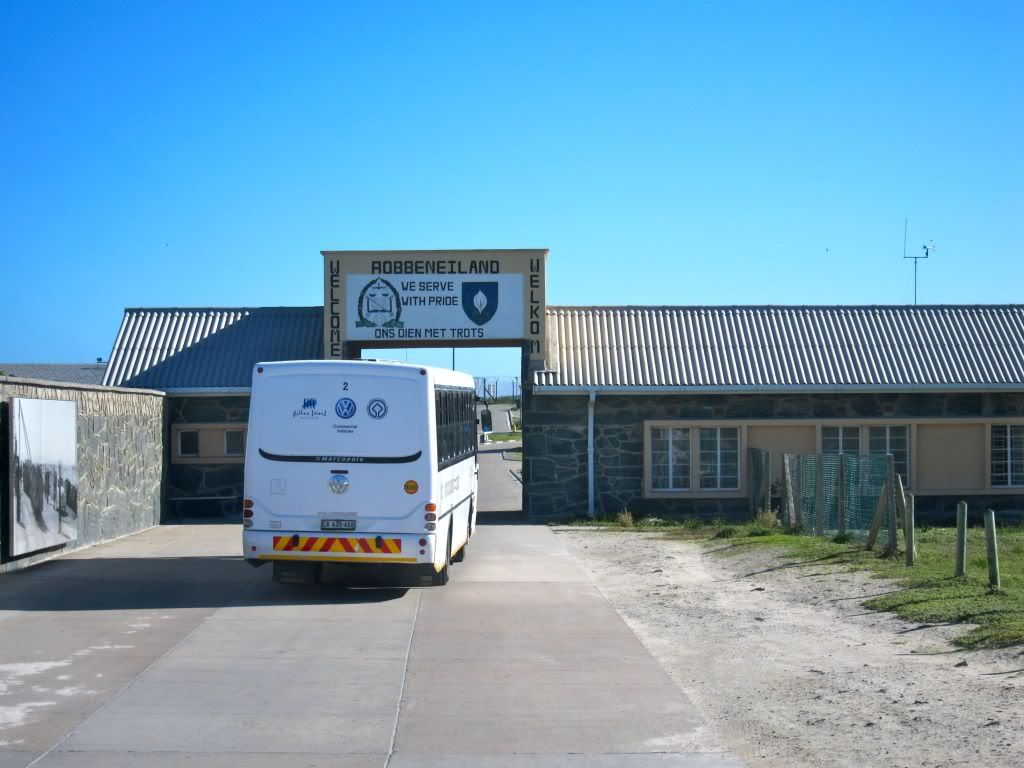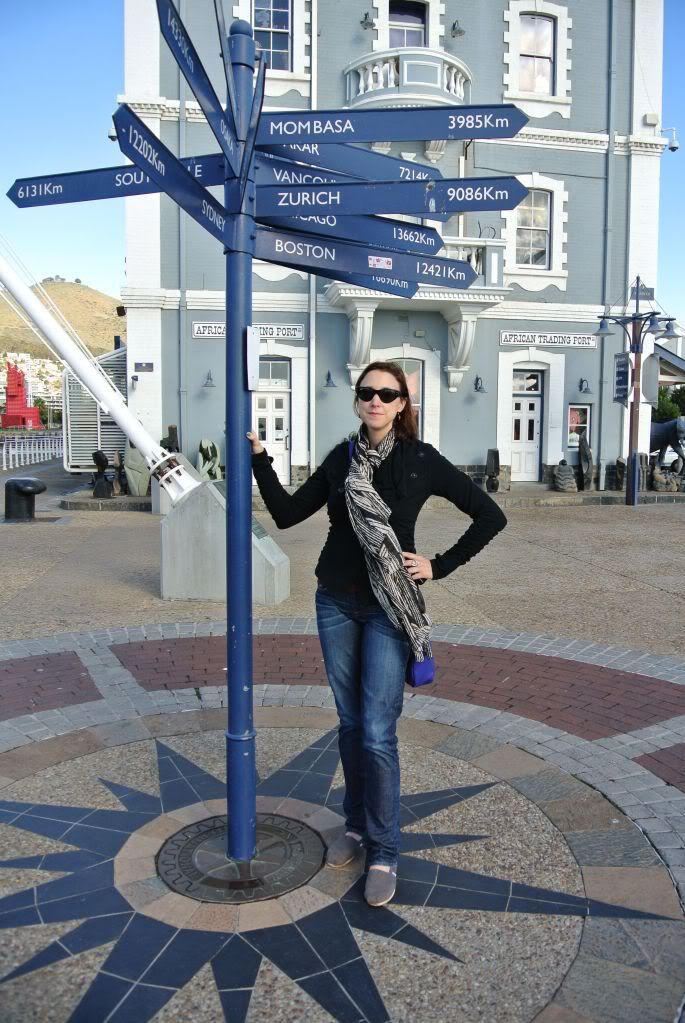
Why was Cape Town such a draw for me? Well, it mainly has to do with this….
At long last we are ready to board the boat. Let me just say that if you want to visit Robben Island, make sure to book your tickets in advance. We were lucky enough to get a spot, but even in the low tourist season this is understandably a huge draw and seats fill up fast.

It’s kinda neat being underway again! As we clear the breakwater we get a better view of Table Mountain, Lions Head and Signal Hill.

To get to Robben Island it’s about a 45 minute transit from Cape Town. Here Table Mountain looks like it’s got a cloud stuck to the top, but other than that it could not have been a more beautiful day at sea.

As we near Robben Island, a look at the shore kind of reminds me of Newport, Rhode Island. If Newport was a prison colony instead of a rich person’s summer playground. Nevermind.

On the pier they’ve got old black and white photos blown up to give you an idea of what the less-fortunate arrivals had to endure. From the 17th to the 20th century this place was used as a prison.

I know it’s not at all the same, but arriving here was vaguely reminiscent of my visit to Auschwitz back in college. Maybe it’s because both places hold such a solemn place in our world’s dark history- and the fact that both are now shut down and open to tourism shows the progress we are making.

As a teenager I read Mandela’s autobiography Long Walk to Freedom and was very moved by his words. What a privilege for me to come here now and see where so many champions of equality were held.

There are several prisons (of varying security levels) located on the island.

And what’s a remote island without a proper leper cemetery? This place was a leper colony at the end of the 19th century.
Church on the island. This place wasn’t only a prison. In fact, the first recorded landing on the island was by my all-time favorite explorer (courtesy of my 7th grade history teach Mr. Horne) Vasco…de Gama. You had to have attended Mashpee Middle School to have gotten that reference.

Held in the lighter security compound was Robert Sobukwe, founder of the Pan African Congress who championed an Africanist future for South Africa. Africanist meaning one that rejected any model suggesting working with anyone other than blacks.

Posted in Robert Sobukwe’s quarters is the correspondence that he sent to his wife. These were pretty moving- if only because it demonstrates how committed they were to each other, as well as to cause.

I can only imagine what it must have felt like for prisoners to be so close to the mainland- yet so incredibly far away.

The last stop on the island tour was to the maximum security prison- the place where Nelson Mandela and other political dissidents were held.

We filed into this former holding cell in order to be greeted and briefed by one of the former political prisoners. The mural on the background was not painted by the political prisoners, but by subsequent detainees. In case you can’t see it very well, it shows Santa Claus in orange holding a money bag that says “Happy Days Are Here Again”. We got no real explanation on what this meant.

Here is our tour guide- a former prisoner who was detained under reason of “sabotage”- a common charge for political activists. I can’t tell you how astonishing it was to hear this man speak about his experiences in the prison. I wonder if he ever imagined that he would one day return to this place as an employee. The world works in funny ways.

Not everyone had beds, and here were the “blankets” that were issued to prisoners (they would get five). On this May day it was a bit chilly outside- and our guide told us that it got very cold in the winter. Try patching together these five blankets and sleeping through the night.

The Apartheid Republic of South Africa lasted from 1961-1994. Political prisoners were only held until 1991 (Mandela was freed in 1990), after that period only criminal prisoners were held until 1996.

Throughout the tour, we were told about conditions in the prison, but we were also made sure to know that not all whites (or prison guards) were pitiless. We heard no malice in his testimony, and he underscored the fact that a visit to Robben Island is meant to be a two-way discussion where people can ask questions. “Nothing is too personal” he said.

And while I know that so many people worked tirelessly to end apartheid, you know that this tour builds to the place where Nelson Mandela was kept for 27 years.

We were only allowed to file by Mandela’s actual cell- which was set up to show what the conditions were like.

A closer look inside (the cell door is locked). In the timeline of the incredible life of Nelson Mandela, this stop was of course interesting- but it was only one small aspect of a very moving tour. I personally found that Robert Sobukwe’s “love letters” provided a more personal and stirring account of life in the prison.

Our tour ended with our guide standing at the threshold and shaking our hands as we left. The irony of a former prisoner releasing us from this compound was not lost on me. All I could say to him as I left was “God Bless you.” People like him- who are the embodiment of Truth and Reconciliation- are a real example for the rest of us who have trouble letting go of grudges and resentment.

And of course, the work towards reconciliation is not done. The world (South Africa…and yes my own country) still sees much to be done in terms of maximizing equality.

The sun was setting, and we boarded the ferry for a return journey that was full of introspection. I think we both felt so thankful to not only visit this place, but also to hear the testimony of someone who lived through this era.






